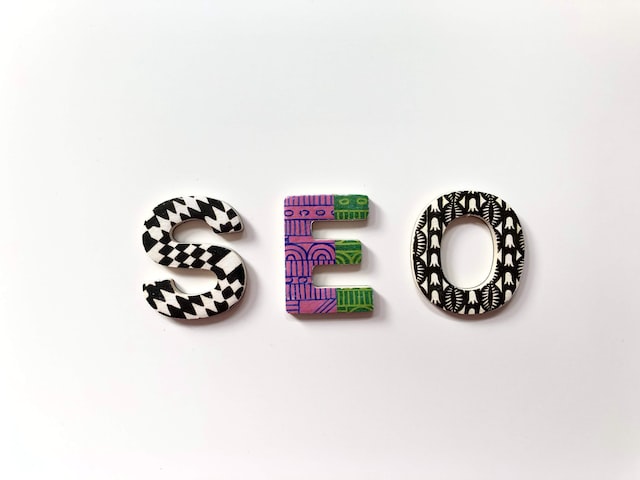
How to Start an Art Business: Ultimate Guide
If you are an artist or an entrepreneur passionate about art, starting an art business can be a lucrative opportunity not only to make money but to share your work and passion with the world.
The global art market is currently worth an estimated $67.4 billion, and it has grown steadily in recent years. The internet has made it easier for art aficionados to buy and sell art from one country to another, and the rising affluence of consumers—especially middle-class ones— has also contributed to the rapid growth.
Yet, despite this growth, the art industry is still relatively small and yet also very competitive.

This means that even if there are a lot of opportunities, it doesn’t mean you’ll automatically achieve success after you’ve started your art business. You’ll still need proper planning, preparation, and especially execution.
That’s where this guide comes in!
In this ultimate guide on how to start an art business, you’ll learn about the following:
- Finding your niche and choosing the right type of art business to start
- Preparing your business plan and portfolio
- Setting up your business
- Marketing your art business
- Execution: selling your art products or services
Without further ado, let us begin right away.
Step-By-Step Guide to Starting an Art Business
While starting an art business can be a daunting task, it can also be a very rewarding one.
Here, we will discuss the steps involved in starting and running a successful art business:
Step 1: Finding your niche
The first step in starting your successful art business is finding your niche.
What kind of art business do you want to start? Will you be creating your own art, and if so, what kind? Who is your target audience?
Here are some considerations when attempting to find your niche:
- Your passion: what are your interests? What kind of art are you passionate about and enjoy creating?
- Your skills and experience: what kind of art do you have experience and expertise with?
- Your target audience: who is your target market? What is their budget? What may they be interested in?

Small business owner, Young People Creating Pottery.
Once you have considered these factors, also remember that there are many different types of art businesses you can start, including but not limited to:
- Artists: create and sell original works of art.
- Art galleries: a gallery sells works of art by third-party artists, including original paintings, sculptures, and others.
- Art dealers: a dealer buys and sells works of art, typically on behalf of investors or collectors. Similar to a broker or shopper in other niches.
- Art appraisers: evaluate and appraise the value of original works of art, typically working on behalf of collectors or organizations (i.e., for insurance/tax purposes.)
- Art conservators: restore damaged works of art and preserve older works of art.
- Art teachers: pretty self-explanatory, a teacher teaches art classes to students.
- Art curators: responsible for the acquisition, display, management, and care of art collections in galleries, museums, and other places displaying works of art.
- Art publishers: produce and distribute printed art, art books, and other works of art.
- Art consultants: advise individuals and businesses on the purchase of art (i.e. for their homes, offices, etc.)
- Art therapists: use works of art as a form of therapy to help people with mental health issues.
Choose a type of art business and a niche where you can focus on your strengths. Also, figure out how you can be unique and set yourself apart from the competition once you’ve chosen a specific type.
Step 2: Set your prices
Once you have decided on a niche and a type of art business to start, the first thing to do is set your prices.
Establishing a pricing strategy can be more difficult than it initially looks, but it’s very important to get it right. Pricing your art or your service too high, and you may not get any buyers/clients. Yet, if you price too low, not only may you lose money, but it can negatively affect the brand perception of your business.

Here are some tips on how to set prices for different types of art businesses:
- Artists: when setting prices for your own work of art (i.e., for artists), consider the cost of materials, the time it takes for you to finish the work, and the current demand for your work. Also, assess the prices of similar works in the same style by other artists.
- Art galleries: galleries typically take a commission between 30% and 50% of the work’s sale price. Of course, the size of the gallery and the artist’s reputation may affect the commission rate.
- Art dealers: art dealers make a profit by buying works of art at a lower price, then selling them for higher. As a dealer, you can set your profit margin based on the value of art and the demand for it.
- Art appraisers: art appraisers charge a fee for their services depending on the value of the art and the complexity of the appraisal process
- Art conservators: typically charge by the hour, and the hourly rate can vary depending on the complexity of the conservation work, as well as the conservator’s reputation/experience.
- Art teachers: may charge by the class or by the hour.
- Art curators: may be paid a salary when working for museums or other institutions but may also receive commissions based on the success of the exhibitions they curate.
- Art publishers: publishers typically charge a royalty on each sale.
- Art consultants: typically charge a fee for their services, depending on the scope of the consultation and the consultant’s reputation/experience.
- Art therapists: art therapists typically charge by the hour. The hourly rate may vary depending on the location of the therapy sessions and the therapist’s experience.
When setting prices for your art or your services, it’s best to be transparent and avoid including any hidden costs. If you are selling works of art, be open to negotiation—which is common in selling art—and be flexible. You may also want to offer discounts for repeat clients to encourage retention.
Step 3: Create a business plan and portfolio
Once you’ve decided on what type of art business you are going to start and how you are going to price your work or your services, you can start developing a business plan for your art business.
A business plan is especially useful if you are planning to secure external funding—investment, bank loan, etc. However, even if you are planning to fund your business on your own, a business plan is still very useful to provide a roadmap for your art business to achieve success.

So, how should you create your business plan? There is no clear set of rules for what’s considered a “good” business plan, but the typical format should include the following sections:
- Executive summary: a one or two-page (sometimes more) summary of the whole business plan. This section should explain in brief your art business name (brand), the products and/or services you offer, your target market, your unique value proposition (UVP), and your competitive advantage.
- Business overview: this section should cover an in-depth discussion about your business, including your history, what you sell, your mission statement, and organizational structure, among other information.
- Products and services: this section should cover an in-depth description of the products and services you offer in detail.
- Marketing plan: a detailed marketing plan covering how you are going to reach your target market and sell your products/services.
- Financial projection: estimates of your finances, including a budget, planned expenses, income, and revenue projections.
Depending on the type of business you are going to start, you may also need to create a portfolio.

Your portfolio is, simply put, a collection of your best work that you can present/show to potential buyers and clients so they can consider buying your art or hiring your services. Some tips:
- Choose only your best work: carefully curate your portfolio and only include your best work. The pieces you include should be representative of your style and immediately visually appealing.
- Organize your work: you can organize your work by medium/format, style, subject matter, or any other criteria. Organize it in a way that makes sense for you.
- Make it easy to find your information: make sure it’s easy to find the information about you and/or your business in your portfolio. Use this chance to communicate your background/history, your unique selling points, and your goals.
Step 4: Get the necessary permits and licenses
Depending on the location where you start the art business, you may need to obtain a business license or specific permit before you can start selling your products or services.
To find out what permits and licenses are required, contact your local city or county government so you can get accurate information. You can also check your local government’s website or contact them on social media for information about the requirements.

Also, different types of art businesses may require special licenses and permits, for example:
- If you are starting an art gallery, you may need a special permit to sell alcohol if you decide to serve it.
- Art dealers may need a special permit to be able to sell works of art that are considered to be cultural properties.
- Art appraisers and conservators may need certifications from a relevant professional organization before they can find clients.
Step 5: Market your art business
Now that you’ve established your business, it’s time to start planning how you are going to market your business and your art products.
While marketing is a pretty deep subject on its own, here are the most important areas you should focus on:
Establishing an online presence
In today’s competitive digital business landscape, it’s critical for any business to have a strong digital infrastructure and online presence.
For art businesses, there are four main pillars of online presence we should focus on:
1. A professional website
A website is essential for any art business.
Your website can function as:
-
- Your digital business card: giving way for potential customers to learn how to contact you (business name, address, phone number, etc.)
- Your digital storefront and portfolio: showcasing the art products (and services) you offer
- Your receptionist: allowing customers and clients to book an appointment for your art service directly on the website

In fact, it’s highly likely that your website will be the first touch-point potential customers may have with your business, and we all know how important that first impression is.
So:
- Make sure your website is functional and visually appealing. Fortunately, with platforms like Wix, Squarespace, Weebly, and even the handy WordPress, it’s now much easier and affordable to build a professional website.
- Use high-quality images, photos, and videos to showcase your work. This is very important to ensure engagement, especially for art businesses that are naturally visual.
- Make sure your website is mobile-optimized and loads fast. More and more people are exclusively browsing the internet from their smartphones or tablets, and you wouldn’t want to miss out on this huge number of potential customers.
- Optimize your website to rank higher on the search engines for relevant keywords or SEO (Search Engine Optimization). Use relevant keywords naturally throughout the website, so people can find you when they are searching for keywords related to your art products or services.
- Promote your website on social media, email signature, and other marketing channels.
2. Social media
With virtually everyone now active daily on social media, it’s quite obvious that social media will be an effective way for your art business to promote your product/service and connect with potential customers.
However, at the same time, social media is now a very saturated and noisy place to promote your work. So, the question is, how can we build an online presence on social media effectively?

Here are some tips and best practices:
- Consistency is key. The more frequently you share your work, product, or service while being consistent in quality, the more people will be aware of your brand.
- Use relevant hashtags so your posts will be seen by those who are interested in what you have to offer.
- Actively engage with your audience. Answer questions promptly, respond to comments (even negative ones), and participate in relevant discussions.
- Run contests and giveaways to build awareness and generate buzz. However, make sure the contests/giveaways are relevant to what you have to offer.
- Promote your social media accounts on your website, email signature, and other channels.
3. Google Maps (Local SEO)
If your art business is targeting local customers, it’s very important to ensure your potential customers can find you on Google Maps. Nowadays, Google prioritizes Google Map results for keywords like “Art galleries in New York,” “Art curators in LA,” and even near-me queries like “Art historians near me,” including voice-based queries.
Thus, if your business doesn’t rank high enough on Google Maps for your area, you are going to miss out on a lot of potential clients.
To optimize your Google Maps listing—or what we call local SEO—, we can focus on just four main steps:
- Claim and verify your Google Business (previously Google My Business listing). Simply follow the instructions provided by Google Business, and you should be good to go.
- Complete and optimize your Google Business profile. You can include your target keywords, but focus on providing complete, compelling, and accurate information for your customers. The more complete your profile is, the more likely Google will feature you on the search results. Make sure to add high-quality photos and videos to your Google Business profile.

- Get (positive) reviews from your clients and customers. You should focus on getting reviews on Google Maps, but reviews on other platforms like TripAdvisor, Yelp, and other relevant ones can also help.
- Build citations (mentions/listings of your business’s name, address, and phone number) on relevant online directories. A simple Google search for “art business directories (city name)” should present you with a list of results for these directories.
Do these consistently, and you should climb higher on Google Maps steadily.
4. 24/7 Online booking
Especially if you provide art-related services (art curators, art historians, art consultations) that rely on client appointments, having a reliable and functional 24/7 online booking function is an important online infrastructure.
Customers today simply prefer the convenience of online booking without needing to call or visit you, and more and more people are booking their services outside business hours.
Some key considerations when setting up an online appointment function for your art business:
- Choose an online booking solution that is easy to use and intuitive, both for you and your customers/clients
- Make sure the online booking platform is 100% secure and that your customers’/clients’ information is protected
- Provide enough options for your clients regarding appointment times, service options, and pricing
- Send confirmation emails to your customers after they book an appointment
- Follow up with your customers that have shown up to their appointment, and thank them for their business. This can mean a lot for some customers and may improve loyalty.

If you are looking for an online booking/appointment solution that can help you manage and run your art business, our recommendation is Bookeo. Bookeo is both cost-effective and easy to use while offering 99.9% uptime and an established reputation in handling data security.
We’d recommend trying Bookeo’s free trial so you can experience for yourself how Bookeo can help you grow your art business and manage your day-to-day operations.
Promoting your art business
In addition to establishing a strong online presence and digital infrastructure, you should also leverage other channels and methods to promote your art business, for example:
- Attending art exhibitions and fairs: these events can be a great way to showcase our work or product/service in front of a wider audience. You may also leverage these events to find and build relationships with potential partners and customers.
- Network with other art professionals and artists: by building and nurturing new relationships, you can get more people to become aware of your work and product/service.
- Partnering with online galleries: there are many online galleries that can help sell your art over the Internet. This can be a great way to expand your art’s reach to a global audience.
- Offer classes and workshops: offering art classes and workshops (even for free) can be a great way to establish yourself as the expert in your niche and build awareness.
- Reach out to local galleries and local businesses: they might be interested in displaying your art.
- Email marketing: create a mailing list and leverage email newsletters to let potential customers know about what you sell, as well as upcoming events
- Get involved in your local community: build relationships with members of your local community, and get your work or product/service seen by more people in the area.
- Paid advertising: advertising on Google, social media platforms, or traditional media (printed) can be effective in building awareness and driving potential customers to your art business. However, although they are virtually guaranteed to generate quick results, keep in mind that running these ads can be very expensive when not managed properly.
Wrapping Up
Voila! Now you are finally ready to sell your art or services and make some money.
Keep in mind that starting an art business may take time and effort—especially to build your reputation, so don’t get discouraged if you don’t see immediate results. Keep creating your art or improving your services, and keep optimizing your marketing efforts.
Also, don’t underestimate the importance of building relationships with other artists, other art businesses, and potential clients.
While starting an art business may not be easy, it is definitely possible to achieve success. By following the tips we’ve shared above, you now have a solid foundation to do so.

